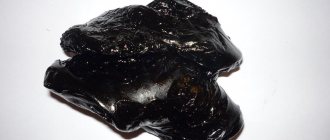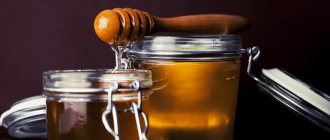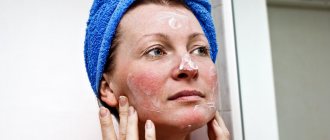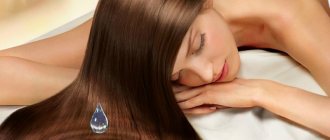Aloe is a herbaceous plant with dense, long leaves. We most often come across such varieties as agave or aloe vera. Both are used in folk cosmetology and both are easy to grow at home. They are unpretentious, can withstand the absence of moisture for a long time, and can reach up to three meters in height.
The plant is widely used in medicine for the treatment of ENT organs, gastrointestinal tract and various inflammatory diseases. The secret of the benefits of aloe lies in its unique composition.
Aloe effectively moisturizes dry skin, eliminates oily shine, helps cleanse the epidermis of acne and sebaceous plugs, treats inflammation and irritation. But the main value of aloe juice in cosmetology is its ability to rejuvenate the face.
The benefits of aloe for female beauty
Agave contains vitamins C, E, group B, as well as Mg, Ca, Zn and other minerals. They, in particular, give aloe beneficial properties for the face against wrinkles. The plant contains amino acids and enzymes. Aloe promotes rapid healing of wounds, stimulates the immune system, disinfects, and relieves pain.
Together, all the beneficial elements in this herbaceous plant become an effective remedy for combating many skin problems. Aloe has the following cosmetic properties.
- Cleanses. “Generalite” pores from various contaminants and sebaceous plugs. Improves tissue regeneration, stimulates metabolism.
- Heals. In particular, for acne. It also prevents the appearance of acne. Helps with psoriasis, herpes, boils. “Draws out” abscesses.
- Smoothes out. Helps smooth out skin texture and wrinkles. Stimulates the production of collagen and elastin. Returns the skin a youthful and fresh appearance, slows down the aging process.
- Pulls up. With an integrated approach, it tightens sagging skin, making it smooth and velvety.
- Smartly moisturizes. Increases the level of moisture and nutrients in the epidermis, but in a balanced way. Therefore, it is ideal for dry skin and, at the same time, copes with excessive secretion of subcutaneous fat.
- Softens and disinfects. Makes rough areas of skin smooth. Eliminates inflammation and irritation, soothes the skin.
Aloe can be included in home cosmetics for any age and skin type. The plant is equally effective on both sensitive and problematic epidermis. And by choosing the right “company” for agave from other natural ingredients, you can get a real elixir of health and youth. For example, a face mask made from aloe juice and natural honey is equated to such products.
Indications for use
Aloe juice is used for all skin types, but for different purposes:
- dry skin - aloe moisturizes the epidermis and retains moisture deep in the dermis. At the same time, the juice of the plant does not irritate even the most sensitive skin;
- oily – an aloe mask is the best home remedy for eliminating pimples, blackheads and inflammation. The juice not only removes excess sebum, but also prevents inflammation of the sebaceous ducts and disinfects the skin of the face;
- for purulent rashes, eczema of any origin, aloe is simply irreplaceable;
- normal – aloe is used for irritation and inflammation, as it restores lymphatic drainage and stops inflammatory processes;
- aging – tannins restore strength to the skin, and the astringent effect of mucopolysaccharides not only promotes cell regeneration, but also visually smoothes out fine wrinkles.
Who is not suitable for?
Paradoxically, even such a useful herbal remedy cannot be used at the first “want”. There is a risk of allergies that must be excluded. To do this, apply the sap of a “hundred-year-old tree” to the inner bend of the elbow or wrist. If after an hour there is no irritation or rash on the skin, then everything is fine and you can experiment. But besides the individual reaction, aloe vera juice has other contraindications. It cannot be used under the following circumstances:
- recent mechanical stress. The leather has been deeply professionally cleaned;
- undiagnosed diseases. There are signs of skin diseases on your face, the treatment of which you have not yet discussed with your doctor;
- advanced rosacea. The vascular network on the face has spread over large areas;
- pregnancy and lactation. In this case, there is no clear prohibition, but there are risks and therefore it is better to consult a doctor.
Video on the topic How to prepare aloe juice for a cosmetic mask
Contraindications and possible side effects
Aloe juice, even in masks, is a potent remedy that may not suit your skin. Therefore, before using it, take the time and conduct an allergy test. Apply the juice of the plant to a small area of your wrist and observe the skin reaction. Waiting just an hour is not enough: signs of redness, itching or irritation may appear much later. The optimal time is 24 hours. If during this period no unusual manifestations have appeared on the surface, then you can use the product.
When applied externally, the product has almost no contraindications, except for individual intolerance. Cosmetic procedures using masks based on plant juice or gel should be avoided if you have:
- advanced skin diseases;
- dermatitis;
- diseases of the mucous membranes of the eyes.
Side effects after using aloe-based formulations are very rare and are mainly associated with incorrect use or individual intolerance. Unpleasant consequences can be expressed in the form of:
- slight irritation;
- feeling of skin tightness due to too frequent use of masks that dry out the skin;
- burning or itching of sensitive areas.
To prevent side effects, follow a few rules:
Use this or that mask exclusively in accordance with the recommended frequency and duration of the course. Do not overexpose the composition on your face: it is important to follow the time specified in the recipe. Accurately determine your skin type before using the mask so as not to dry it out or make it even more oily. When using on dry areas of the face, add products to aloe juice that help increase skin hydration. Be sure to check the tolerance of the components of the prepared mixture before applying to the skin. Each time before using the mask, thoroughly clean the entire surface of your face. Do not store the cut aloe leaf for too long, except by placing it in the refrigerator - the plant juice will become less beneficial or may even have the opposite effect.
How to prepare aloe leaves
The most important stage in creating masks with aloe juice for wrinkles and other skin problems is preparing the leaves. This must be done correctly in order to preserve the maximum amount of nutrients. The best option is to use a plant grown on your own windowsill. Aloe juice is also sold in pharmacies, but such products retain much less valuable components than freshly picked leaves. In addition, alcohol and other impurities are added to store-bought juice, which can be harmful.
The leaves are easy to process, but it will take time for them to “ripen”, so the preparation should be done in advance. The technology consists of four stages.
- Cutting. Select several lower fleshy leaves from the agave and carefully cut them to the very root. To avoid harming the plant, it is better to use a well-sharpened knife. Before cutting, it is advisable not to water the plant for two weeks, which will allow the leaves to “mix.”
- Treatment. Wash the leaves to remove dirt and dust. Better with cool water. Then dry with a napkin or towel.
- Cooling. Wrap them in thick paper or a piece of natural fabric and put them in the refrigerator. To avoid freezing, it is best to place it on the door. The leaves should be chilled for one to two weeks.
- Collecting juice. After two weeks, you need to take out the leaves and squeeze the juice out of them. This should be done within a few hours, when the juice is richest in nutrients. To obtain juice, you need to cut off the top shell from the finished leaf, place the pulp of the leaf on gauze and squeeze it into a bowl. If the recipe calls for gel or pulp, then remove the outer skin of the leaf, cut off all the pulp and mix it in a bowl. The juice and pulp are suitable for use within three days. Provided that it is stored in a sealed glass container and refrigerated.
In cold conditions, aloe leaves produce special elements that stimulate the vital activity of plant cells. The leaves accumulate a large amount of useful substances, which are concentrated in the juice and pulp.
For dry skin
For dry skin, you can choose simple homemade masks:
| Type of mask | Ingredients | Preparation | Features of application |
| With melon |
|
|
|
| With butter |
|
|
|
| With carrots and pumpkin |
|
|
|
Homemade aloe face masks: 5 popular ideas
In the beauty industry, aloe leaf juice is used in the production of creams, lotions, and hair care products. But among supporters of natural cosmetics, it is face masks with aloe for wrinkles and other skin imperfections that enjoy a brilliant reputation. What means are we talking about? Next - TOP 5 popular recipes for aloe masks.
Video on the topic: Mask for all skin types made from aloe, milk and yolk
Honey with olive oil
Summary. This anti-wrinkle aloe face mask noticeably smoothes facial and age-related furrows, has a positive effect on aging skin, activates metabolic processes, and improves blood circulation. Olive oil rejuvenates the epidermis, making it firm and elastic.
What you will need
- Half a tablespoon of 100% natural olive oil.
- Half a tablespoon of fresh aloe leaf juice.
- Fresh chicken egg.
- A large spoon of melted honey.
Step by step
- Beat the egg with a whisk or fork.
- Pour olive oil and prepared aloe juice into the egg mixture.
- Pour melted honey in there. Mix all ingredients well with a spoon.
- Apply the mixture to all areas of your face. Try to relax and wait 20 minutes.
- Wash your face with clean water or use a special lotion.
- You can use daily cream.
Video on the topic Cleansing face mask made from aloe and honey
Nutritious curd and honey
Summary. Cottage cheese increases moisture content, nourishes the skin, and improves metabolism. A face mask with aloe in combination with honey and fermented milk has a powerful healing effect, treats inflammation and effectively fights acne and pimples.
What you will need
- The pulp of a leaf from a “hundred-year-old tree.”
- A small spoon of natural honey.
- A small spoon of low-fat grainy cottage cheese.
Step by step
- Mix everything and bring the product to a paste.
- Apply a thick layer. You need to keep it on the skin for at least 20 minutes.
- Wash your face with clean water.
- Apply some daily cream.
With lemon for acne and oiliness
Summary. The product fights acne and pimples, eliminates inflammation, and soothes irritated epidermis. Lemon brightens and evens out the tone.
What you will need
- Aloe leaf gel.
- One teaspoon of freshly squeezed lemon juice.
Step by step
- Place the gel in a clean bowl and add citrus juice.
- Mix the ingredients well.
- Apply the prepared liquid mass thinly onto a clean face. The mask should act for 15-20 minutes.
- Wash your face with water at room temperature and use a nourishing cream.
Video on the topic Aloe and clay care product for problem skin
Soothing with clay
Summary. In addition to the disinfectant and anti-inflammatory effect, the mixture saturates with beneficial elements that are found in abundance in blue clay. This natural preparation dries out sebaceous skin and normalizes sebum production.
What you will need
- Blue clay dessert spoon.
- Dessert spoon of aloe vera juice.
Step by step
- Mix everything to the consistency of a thick paste.
- Apply the mask with a special brush. Try to relax your facial muscles to evenly distribute the clay slurry.
- After no longer than 20-30 minutes, you can wash your face with clean water and apply your daily cream.
Moisturizing with peach oil
Summary. The product relieves skin from dryness and flaking, relieves inflammation and irritation. The cream deeply nourishes, and the peach oil saturates with fatty acids. In addition, the oil has a slight brightening effect, improves complexion, and increases vascular tone.
What you will need
- A tablespoon of agave gel.
- Half a small spoon of peach oil.
- A teaspoon of heavy cream.
Step by step
- Mix everything into one “puree”.
- Apply to clean skin with a soft brush and leave on for at least 20 minutes.
- Rinse off with clean water and apply daily cream.
The effectiveness of using aloe juice for the face against wrinkles and other defects is confirmed by many positive reviews. Girls say that a face mask with aloe gives quick results: changes are noticeable after the first use. But to enhance the effectiveness of the product, it is better to combine aloe masks with proper nutrition and a healthy lifestyle. Then your skin will shine with beauty to your delight and the envy of others.
For eyes
Caring cosmetic varieties for the eye area are often prepared on the basis of a healing succulent, due to its gentle effect on the delicate sensitive dermis. You can make them yourself or purchase ready-made varieties.
Mask with aloe extract
A noticeable moisturizing, smoothing, nourishing effect is observed after using soothing patches from the Aloe Soothing Essence 80% Hydrogel Eye Patch brand from the Holika Holika line, aimed at the eyes. In terms of popularity, they are among the top best cosmetics.
Additionally, swelling is relieved, dark circles are lightened, and inflammation is reduced. Gently press the patches onto the skin of the eyelids, leaving for 30 minutes.
For wrinkles around the eyes
You can independently prepare an effective remedy designed to smooth out wrinkles in the eye area from the juice of a prepared succulent leaf, combined with a dessert spoon of milk. Add the mixture with yolk and beat thoroughly until it has a fluffy, elastic consistency.
Distribute the mixture onto cotton pads, which are applied to wrinkled areas near the eyes. Remove after drying.
Chemical composition of the plant
The exotic cactus has more than 200 active and more than 70 nutrients, including: vitamins A, C, E, B1, B2, B3, B4, B5, B6, B12; potassium, calcium, zinc, iron, manganese, copper, magnesium, phosphorus, chromium, selenium (more than 30 minerals in total); amino acids; essential oils and esters; succinic, cinnamic and other acids; phytoncides and flavonoids; resins and tannins; mono- and polysaccharides; alkaloids.
An indispensable component in the composition, due to which agave is widely used in cosmetics, is allanoin. The substance penetrates deep under the skin, delivering other components. Has a powerful regenerating, moisturizing and restorative effect.











